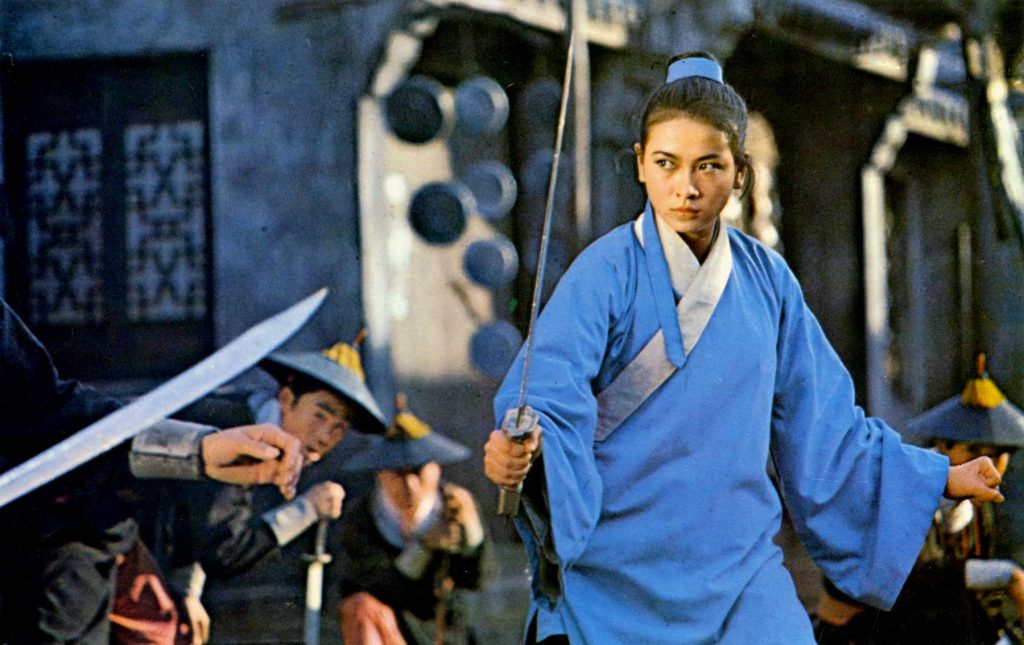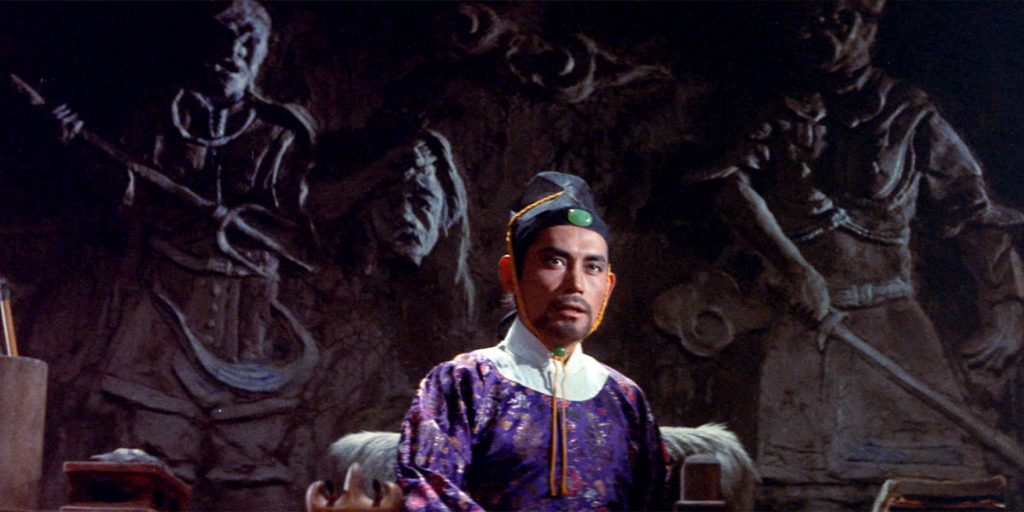Punctuated by restlessly creative camerawork and a suspenseful narrative, A City Called Dragon is a thrilling wuxia sure to please newcomers and genre-fans.
For those unfamiliar with the term, wuxia is a genre of Chinese martial arts films that are set in ancient China and involve spectacular physical feats, such as gravity-defying leaping, catching arrows mid-flight, and sending foes flying backward with a single push of a hand. While the stunt-work in A City Called Dragon is not as mind-blowing compared to the genres’ best films (notably King Hu’s A Touch of Zen or Ang Lee’s Crouching Tiger, Hidden Dragon), it’s still a tense, exciting offer from a reliably entertaining genre. Characters leap, fly, and walk on water, and the action scenes are directed with a sense of uninhibited glee that make them genuinely fun to watch, even if the stunts are not all that original.
However, what heightens the enjoyment is to see director Tu Chun-Hsun and editor Wang Chin-Chen work together to craft the action sequences. Through cutting between different shots of an actor in midair, they make it appear as if he is flying, by reversing the footage they make a character look like she’s leaping backwards. These practical filmmaking effects give the picture a distinct charm and make the action feel paradoxically more grounded even if it looks “fake.”
Not only are the action scenes riveting, but the film is effective at creating suspense in seemingly normal situations. In one sequence, the protagonist Shang Yan-Zhi (wuxia regular Hsu Feng, genre-fans will recognize her from King Hu’s masterpieces Dragon Inn and A Touch of Zen) is walking down the street while she suspects regular-looking street vendors are following her. We hear only the clanging of knives from one vendor, the footsteps of another. The minimal sound design heightens tension and intrigue as the rest of the film-world disappears and we are left with these few sounds. Suspense is commonly felt throughout, and what elevates A City Called Dragon even more is its restlessly creative camerawork. Some sequences feature a rugged handheld camera that heightens the visceral impact and tension, while others rely on sharp snap-zooms that jolt the viewer as well as off-kilter dutch angles to visually showcase tension and the electrifying effect of the action. Chun-Hsun’s directorial flair is refreshing, especially to those of us inundated with blandly shot action blockbusters.

One of the film’s greatest flaws is in its lighting: every night time scene is too dark, and there are quite a few night time scenes, including the climatic action sequence. This could be either a problem with the film print or the digital transfer, but it seems to be a problem with the print, as it has clearly aged. Lines, dots, and slight discolorations appear throughout the film, but mostly do not distract from the viewing experience. Sadly, it is the darkness of the picture that disrupts the enjoyment of the movie, but this is not completely surprising for an underseen wuxia gem. If anything, it’s a reminder of the importance of film preservation, as hundreds of thousands of films from around the world are lost forever.
Narratively, A City Called Dragon traverses familiar ground. Shang Yan-Zhi is the traditional wuxia heroine propelled into action by a sense of political justice against an oppressive government. She is a spy sent to infiltrate a corrupt government and find a map that will help their cause. It is a clear macguffin, but the specifics of the plot are less important than the aesthetic and action-packed thrills the movie has to offer. Ultimately, that is exactly what makes A City Called Dragon worth watching. Newcomers and fans of wuxia alike will be dazzled by the film’s astonishly creative visuals and suspenseful, windy narrative. Sprinkle in some humor and recognizable actors and A City Called Dragon ends up being a solid, enjoyable espionage action thriller.
A City Called Dragon was screened at the Taiwan Film Festival Edinburgh from 18th-27th September.

